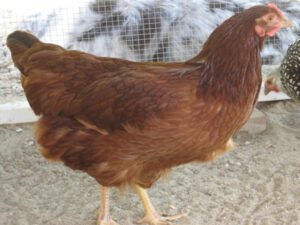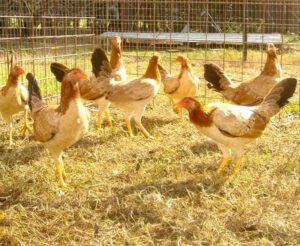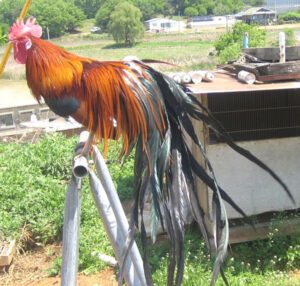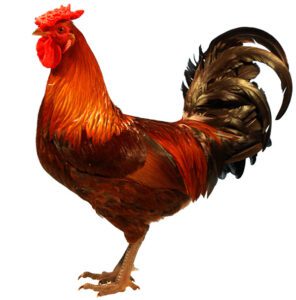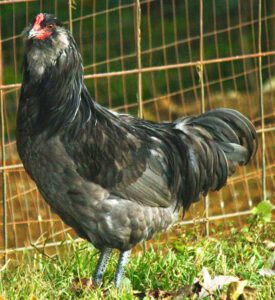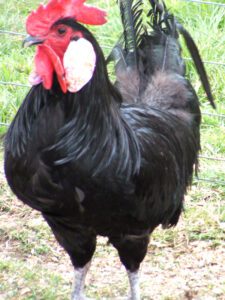Dominique chicken is one of the first breed to become established in the America. And it is among the oldest recorded American poultry breed. It is historically a very important breed and now very rare.
It is also known as Dominicker and Pilgrim Fowl. The breed has been around in the old English history long before poultry standards existed.
Probably this breed descended from chickens brought to New England from southern England during the colonial times. The exact origin of Dominique chicken is unknown.
Although the initial creation of this breed may have involved European chicken breeds and later in it’s refinement, some Asian varieties.
The name of this chicken breed “Dominique” may have come from birds that were imported from the French colony of Saint-Domingue (Haiti). And those birds are thought to have been used as part of the development of the Dominique chicken breed.
They were popular dual purpose birds and plentifully bred on many American poultry farms as early as the 1820s. And this breed enjoyed great popularity until the 1920s.
But they were never used as a commercial breed by the poultry farmers. Dominique chicken breed was officially admitted to the American Poultry Association’s Standard of Perfection in 1874.
There is also a bantam variety of this chicken breed. Review characteristics, behavior and full profile of Dominique chicken breed below.
Dominique Chicken Characteristics
Dominique chicken is often confused with the Barred Rock chicken which has a straight comb and slightly straighter and darker barred markings. But Dominique chickens are easily recognized by their rose combs and barred feather pattern.
Barred Rock chickens possess a single comb, while Dominique chicken possess a rose comb. This is the most obvious differences between this two breed.
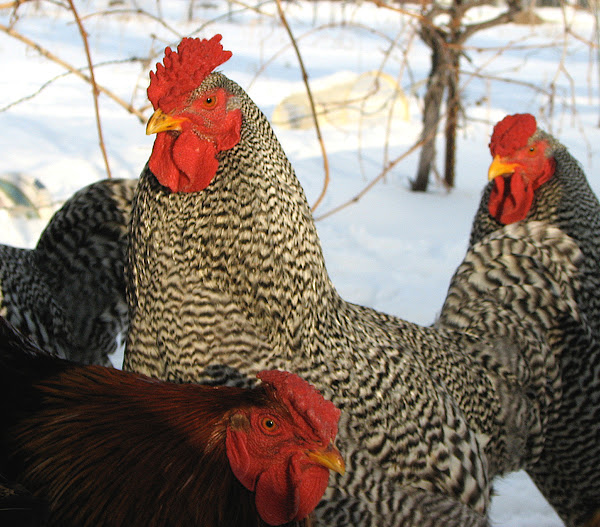
The feathers of Dominique chicken are crossed all along their length by irregular slate and light bars, lending to a somewhat mottled appearance. But the Barred Rocks exhibit crisp, parallel barring.
Barred Rocks exhibit a high-contrast black-on-white color. On the other hand, Dominique chickens exhibit a softer contrast of not quite black on not quite white color.
Dominique chickens have distinctive yellow legs with four toes. They have bright red wattles, red comb and earlobes. The skin color of Dominique chicken is yellow.
Hens are darker, smaller and are rounded with plump full breasts and high tails. While the roosters have a long sweeping tail. They are very beautiful.
Hens are good layers and produce good numbers of brown colored eggs. On an average, Dominique roosters weight about 3.2 kg and hens about 2.3 kg. Photo from Wikipedia.
Behavior/Temperament
Dominique chicken is a dual purpose breed which is good for producing eggs and good quality meat at the same time. They are calm and gentle in nature.
They are great foragers and do well in free range conditions. Although they can also tolerate confinement well. They are very hardy birds and are able to withstand very bad weather.
Hens are decent layers and go broody. Hens will brood their own chicks and are great, attentive and protective mothers. Chicks are early maturing and feathers up quickly.
The breed is of good temperament and also very good as pets. See full breed profile of this chicken breed in the chart below.
| Breed Name | Dominique |
| Other Name | Dominicker, Pilgrim Fowl |
| Breed Purpose | Dual Purpose (Meat & Eggs) |
| Breed Temperament | Calm, Docile, Friendly, Hardy, Easily Handled, Quiet, Bears Confinement Well |
| Breed Size | Large |
| Broodiness | Average |
| Comb | Rose |
| Climate Tolerance | All Climates |
| Egg Color | Brown |
| Egg Size | Medium |
| Egg Productivity | Medium |
| Feathered Legs | No |
| Rarity | Watch Status |
| Varieties | Original Dominique chickens exhibit a softer contrast of not quite black on not quite white color |

